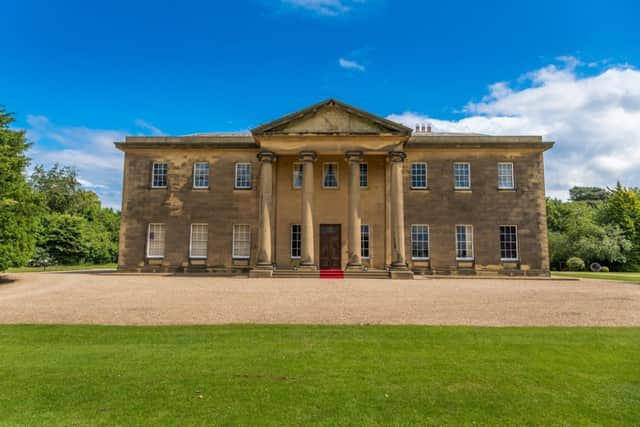How the rebirth of Rise Hall illustrates economic value of historic buildings - Dan Gill


The remodelling of the South Bank has been a particular focus in recent years as city planners look to create a new park, space for employers and new homes.
But what about the historic buildings that make up the dynamic appearance of our city, suburban areas and country retreats?
Advertisement
Hide AdAdvertisement
Hide AdEqually significant in shaping Yorkshire’s identity and with the potential to contribute to its economy, some older buildings in recent years (or even decades) have been disregarded to the point of dilapidation and eventual demolition. I understand the penchant for newness – it’s exciting and often delivers bold design – but we should not forget those mature, stately structures that deserve care, attention, and present uniquely interesting spaces for business and leisure.
Stately homes, halls and mansions alike can be as functional and commercial as buildings that are newly erected in our city centres.
The debate on whether renovation is more cost and time efficient than demolishing and building new has been reverberating for generations. However, the debate is stalled when it comes to listed properties and buildings, as there are legislative compliance factors to consider before an individual or company can suggest demolishing and rebuilding on these sites.
I’d argue that restoration and renovation provide the more cost and time-effective option to drive regeneration, although Historic England has cited in its ‘Heritage at Risk’ report that 555 historic sites across Yorkshire, including Leeds’ Grand Quarter, are still at risk of being demolished and falling into disrepair.
Advertisement
Hide AdAdvertisement
Hide AdWith 13 new sites being added to the list from last year and only 53 of the 555 sites being saved and removed from the register since 2018, the rate of new sites being added to the list, along with those that remain, is much higher than those being saved.
The report explicitly identifies that listed buildings can be rescued and reworked into functional spaces to suit a variety of needs, and there are three main approaches to working with an historical building:
Restoration: when a building is fully restored to the state it was when first erected, including décor and building work
Renovation: to make improvements to a building that are different to those in its original state, such as changing the function of a room in a building
Advertisement
Hide AdAdvertisement
Hide AdPreservation: sometimes smaller yet continual management of a building to keep it in its original state.
At Dine, we have taken great pride in restoring and renovating a number of notable Yorkshire heritage buildings, with The Mansion in Roundhay Park the first.
Our biggest endeavour so far is the project to bring Rise Hall in the East Riding of Yorkshire to life. Myself and a number of restoration specialists have taken over the work started by Sarah Beeny and invested a further £200,000 to turn this dilapidated building into a fully-functional, commercially operational period estate with all of its historic character retained.
This is why I, along with the rest of the Dine team and its very talented specialist suppliers, will continue to be custodians of local history through ongoing care, renovation and restoration of the buildings we own, while encouraging other Yorkshire enterprises that are looking for a new home, to do the same.
Dan Gill is the founder of Dine